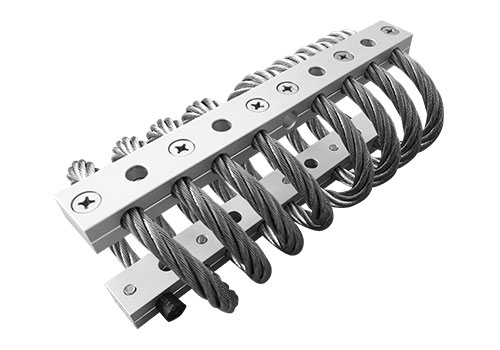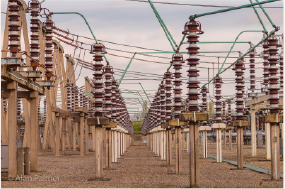1. Are elastomeric parts or Wire Rope Isolators (WRI) better for severe shock applications?
WRI are naturally well suited for shock isolation. Elastomeric parts can be specifically designed for severe shock and perform very well.
2. Are elastomeric parts or Wire Rope Isolators (WRI) better suited to very specific multi axis stiffness requirements?
Elastomers are more flexible in creating custom isolator performance in multi axis systems. The WRI can also be wound differently to customize stiffness.
3. Do the Wire Rope Isolators (WRI) provide the same stiffness in tension and compression?
No, the tension stiffness is significantly greater than the compression stiffness. Also, we do not recommend that the WRI be used in tension.
4. Does our Wire Rope Isolators (WRI) ready for corrosive environments?
Yes, our standard WRI product is made from stainless steel and aluminum. The standard product can be used successfully in most normal indoor environments. Where greater protection is required, such as exposure to salt water or corrosive chemicals, stainless steel should be considered.
5. How can noise be reduced?
In order to be able to reduce disturbing noise levels, it is very important to identify two key elements. The first element is the source of the noise. The second is the frequency of the noise.
6. How do Wire Rope Isolators (WRI) compare to elastomers regarding use over a broad temperature range?
The WRI can be used over a greater temperature range with less change in performance. Proper elastomer selection will make elastomers useful for most applications.
7. How much damping can be expected from a Wire Rope Isolator (WRI)?
WRI have between 5% and 20% damping. The amount of damping is related to wire diameter and stroke. The larger the wire diameter, the more damped (and stiffer) the isolator. Damping can be less with small amplitude vibration.
8. What are degrees of freedom?
This represents the six directions of movement that a vibration isolation device such as an elastomer or wire rope isolator is capable of traveling.
9. What does the GGT series number represent on standard Wire Rope Isolator (WRI)?
The number following GGT represents the wire diameter in metric. The GGT1.6 series isolators use 1.6mm diameter wire.
10. What is fragility?
It describes the amount of shock or vibration that a particular piece of equipment can withstand. Isolation systems are often designed to limit the transmission of forces to the fragility level of the isolated equipment.
11. What is isolation efficiency?
Isolation efficiency is the percent of vibration force or motion that is not transmitted through the vibration mount.
12. What is Natural Frequency?
It is the frequency at which oscillating system will vibrate if displaced from its equilibrium position and allowed to vibrate freely. Often it is described as Fn and measured in Hz(cycles per second).
13. What is resonance?
When the frequency of excitation is equal to the natural frequency of a system, resonance occurs. When this happens there is amplification of the vibration input to the system and this can only be limited by the damping in the isolation system.
14. What type of mounting option should I select on a Wire Rope Isolator (WRI)?
It is the frequency at which oscillating system will vibrate if displaced from its equilibrium position and allowed to vibrate freely. Often it is described as Fn and measured in Hz(cycles per second).









